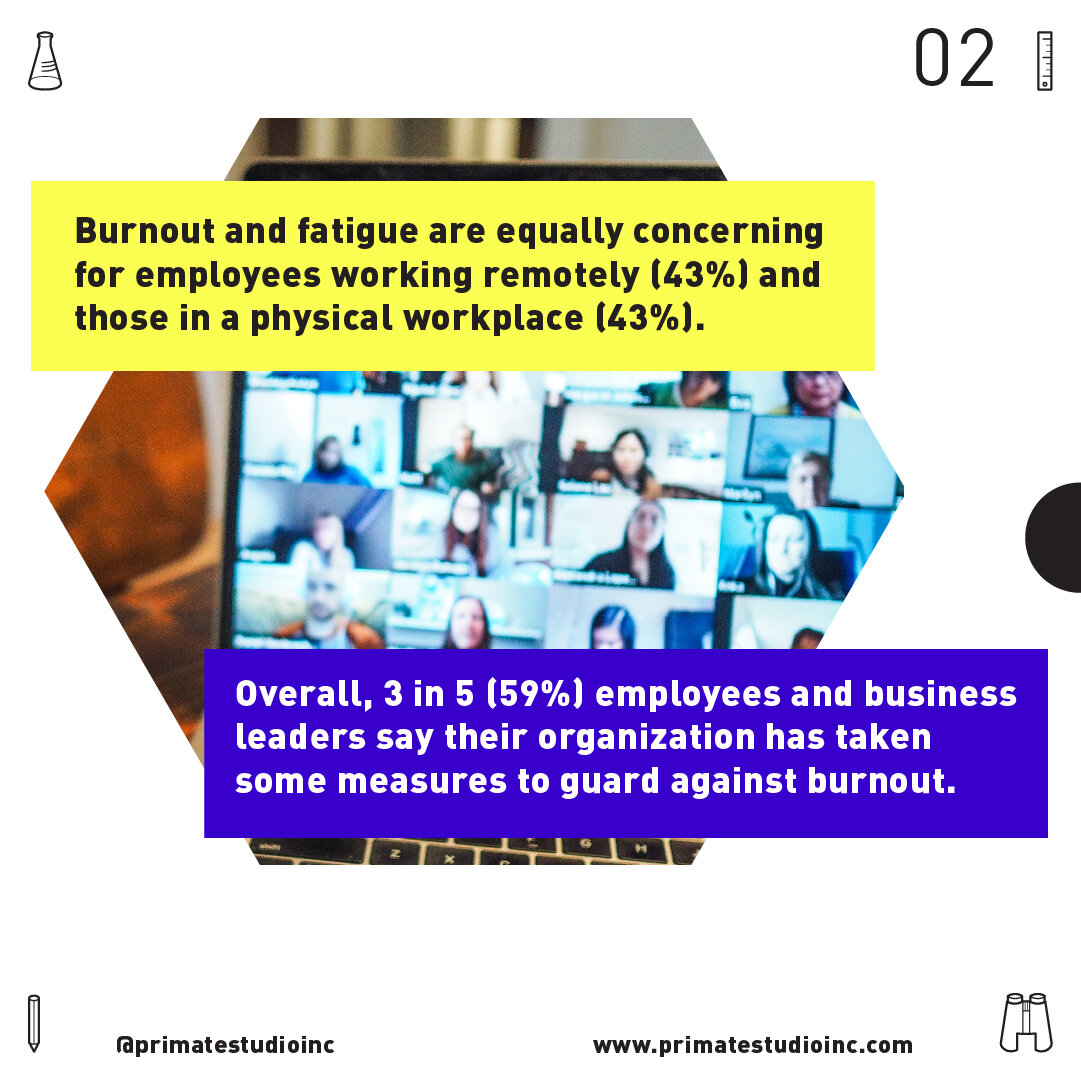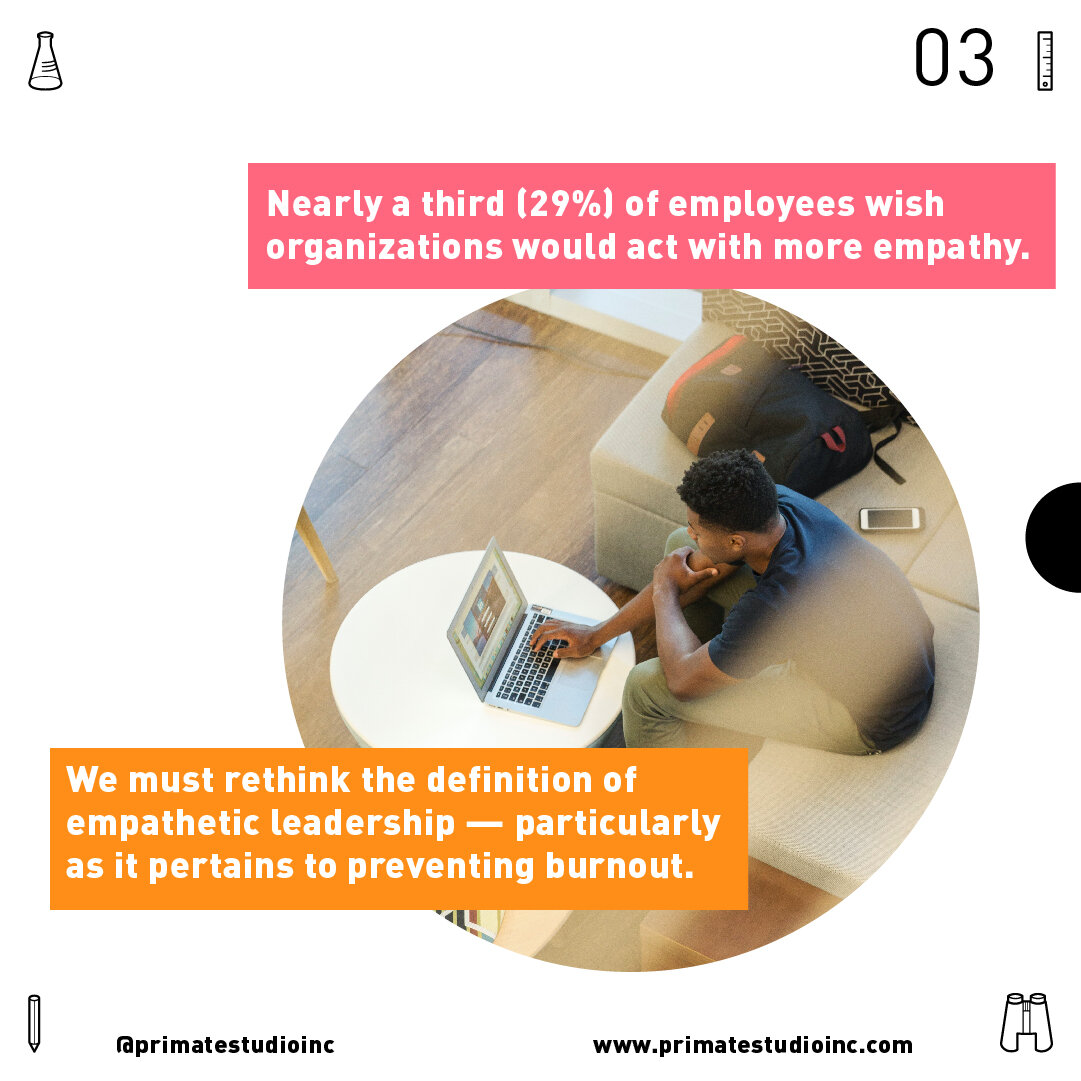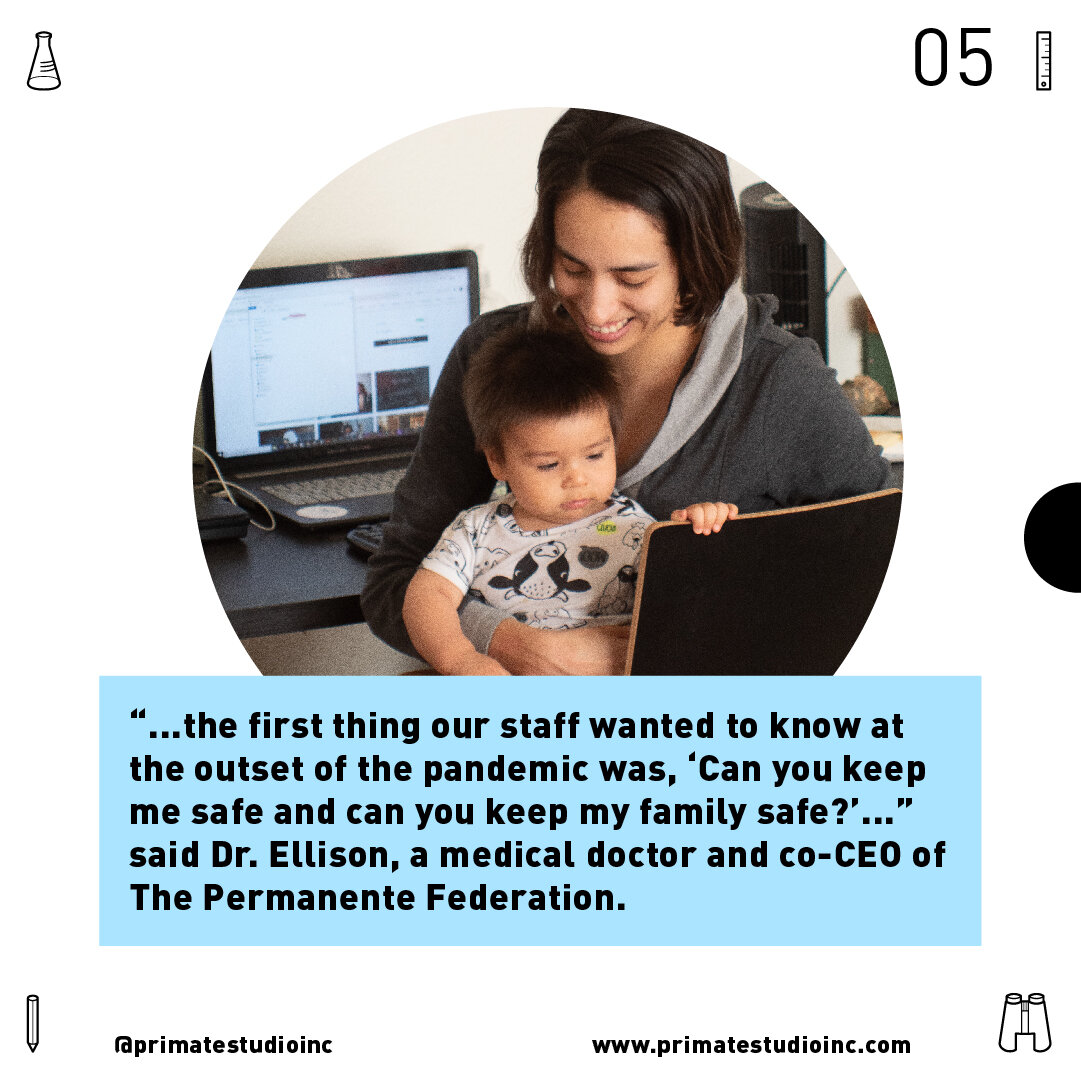Burnout and fatigue are equally concerning for employees working remotely (43%) and those in a physical workplace (43%). Overall, 3 in 5 (59%) employees and business leaders say their organization has taken some measures to guard against burnout.
Nearly a third (29%) of employees wish organizations would act with more empathy. We must rethink the definition of empathetic leadership — particularly as it pertains to preventing burnout.
Leverage data-based decisions to quickly assess what is at the root of the stress. Then employ upstream strategies to tackle the problem.
“...the first thing our staff wanted to know at the outset of the pandemic was, ‘Can you keep me safe and can you keep my family safe?’...” said Dr. Ellison, a medical doctor and co-CEO of The Permanente Federation.
Leaders must meet different needs for the individuals we serve. If there’s one more lesson we can take away from the pandemic, it’s that burnout was always there, but in times of real stress, it explodes.
Resilient leaders make quick pivots and remain nimble. Empathetic leaders dial in to the needs of their employees and adjust to the moment. And human-centered leaders give their companies a fighting chance to flourish in the middle of a global pandemic.
Source:
Jennifer Moss https://hbr.org/









